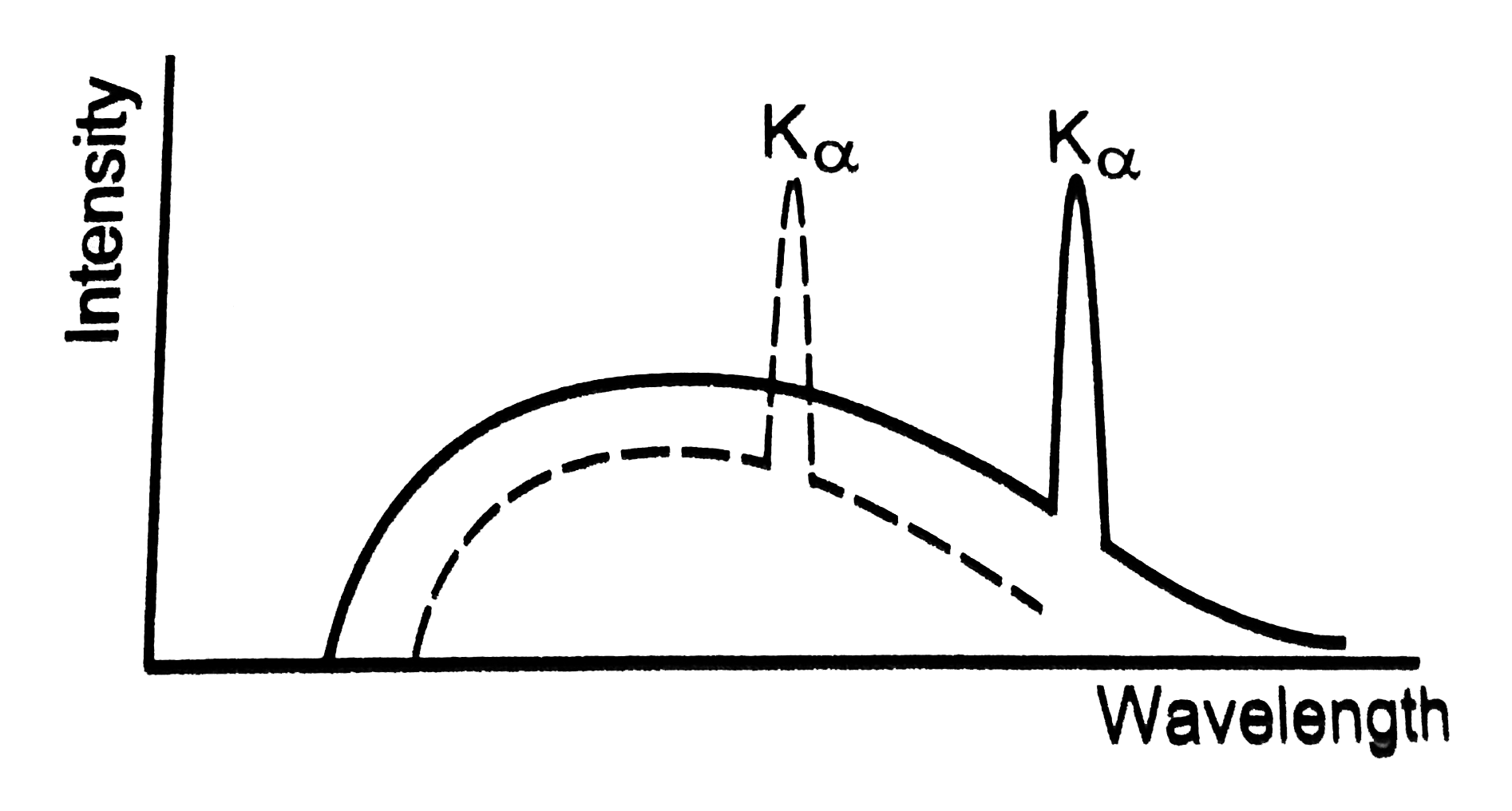50% of the X-ray coming from a Cooling tube is able to pass through a 0.1 mm thick aluminum foil. The potential difference between the target and the filament is increased. The thickness of aluminum foil, which will allow 50% of the X-ray to pass through, will be
zero
<0.1mm
0.1mm
>0.1mm
The correct Answer is:D
To solve the problem, we need to analyze the relationship between the thickness of the aluminum foil and the potential difference applied in the X-ray tube.
1. Understanding the Initial Condition:
- We know that 50% of the X-rays can pass through a 0.1 mm thick aluminum foil. This means that the intensity of X-rays after passing through this thickness is half of the original intensity.
2. Effect of Increasing Potential Difference:
- When the potential difference between the target and the filament is increased, the energy of the X-rays produced also increases. Higher energy X-rays have greater penetrating power.
3. Relationship Between Thickness and Penetrating Power:
- The penetrating power of X-rays is inversely related to the wavelength (λ) of the X-rays. As the potential difference increases, the wavelength decreases, leading to an increase in penetrating power.
4. Maintaining the Same Fraction of X-rays:
- To maintain the same fraction of X-rays (50%) passing through the foil, we need to consider that with increased penetrating power, a thicker foil will be required to achieve the same attenuation (50% transmission).
5. Conclusion:
- Since the penetrating power of the X-rays has increased due to the higher potential difference, the thickness of the aluminum foil must also increase to maintain the same 50% transmission of X-rays. Therefore, the new thickness of the aluminum foil will be greater than 0.1 mm.
Final Answer:
The thickness of the aluminum foil that will allow 50% of the X-rays to pass through will be greater than 0.1 mm.
- We know that 50% of the X-rays can pass through a 0.1 mm thick aluminum foil. This means that the intensity of X-rays after passing through this thickness is half of the original intensity.
- When the potential difference between the target and the filament is increased, the energy of the X-rays produced also increases. Higher energy X-rays have greater penetrating power.
- The penetrating power of X-rays is inversely related to the wavelength (λ) of the X-rays. As the potential difference increases, the wavelength decreases, leading to an increase in penetrating power.
- To maintain the same fraction of X-rays (50%) passing through the foil, we need to consider that with increased penetrating power, a thicker foil will be required to achieve the same attenuation (50% transmission).
- Since the penetrating power of the X-rays has increased due to the higher potential difference, the thickness of the aluminum foil must also increase to maintain the same 50% transmission of X-rays. Therefore, the new thickness of the aluminum foil will be greater than 0.1 mm.
The thickness of the aluminum foil that will allow 50% of the X-rays to pass through will be greater than 0.1 mm.
Topper's Solved these Questions
- X-RaysBOOK - HC VERMA ENGLISHCHAPTER - X-RaysEXERCISE - Objective 2
8 Videos
- X-RaysBOOK - HC VERMA ENGLISHCHAPTER - X-RaysEXERCISE - Exercise
27 Videos
- X-RaysBOOK - HC VERMA ENGLISHCHAPTER - X-RaysEXERCISE - Ques for Short Ans
10 Videos
- THERMAL AND CHEMICAL EFFECT OF ELECTRIC CURRENTBOOK - HC VERMA ENGLISHCHAPTER - THERMAL AND CHEMICAL EFFECT OF ELECTRIC CURRENTEXERCISE - Short Question
9 Videos
Similar Questions
50% of the X-ray coming from a Coolidge tube is able to pass through a 0.1 mm thick aluminum foil. If the potential difference between the target and the filament is increased, the fraction of the X-ray passing through the same foil will be
View SolutionFigure shows the intensity-wavelength relations of X-rays coming from two different Coolidge tube. The solid curve represents the relation for the tube A in which the potential difference between the target and the filament is Va and the atomic number of the target material is ZA. These quantities are Vβ and Zβ for the other tube. Then,

View SolutionX-ray from a Coolidge tube is incident on a thin aluminum foil. The intensity of the X-ray transmitted by the foil is found to be I0. The heating current is increased so as to increase the temperature of the filament. The intensity of the X-ray transmitted by the foil will be
View SolutionWhen X-rays if wavelength 0.5Å pass through 10mm thick Al sheet than their intensity is reduced to one sixth . Find the absorption coefficient for Aluminium.
View SolutionThe potential difference applied to an X-ray tube is 5 kV and the current through it is 3.2 mA. Then the number of electros striking the target par second is
View SolutionLight of wavelength λphfalls on a cathode plate inside a vacuum tube as shown in the figure .The work function of the cathode surface is ϕ and the anode is a wire mesh of conducting material kept at distance d from the cathode. A potential different V is maintained between the electrodes. If the minimum de Broglie wavelength of the electrons passing through the anode is λe which of the following statement (s) is (are) true?

View SolutionA line passes through (1,0). The slope of the line, for which its intercept between y=x−2andy=−x+2 subtends a right angle at the origin is
View SolutionIn an X- ray tube , electrons accelerated through a potential difference of 15000 volts strike a copper target . The speed of the emitted X - ray inside the tube is …….. m/s
View SolutionThe potential difference applied to an X-ray tube is 5k V and the current through it is 3.2 mA. Then, the number of electrons striking the target per second is __________.
View SolutionA ray of light coming fromthe point (1, 2) is reflected at a point A on the x-axis and then passes through the point (5,3). The coordinates of the point A is :
View Solution
